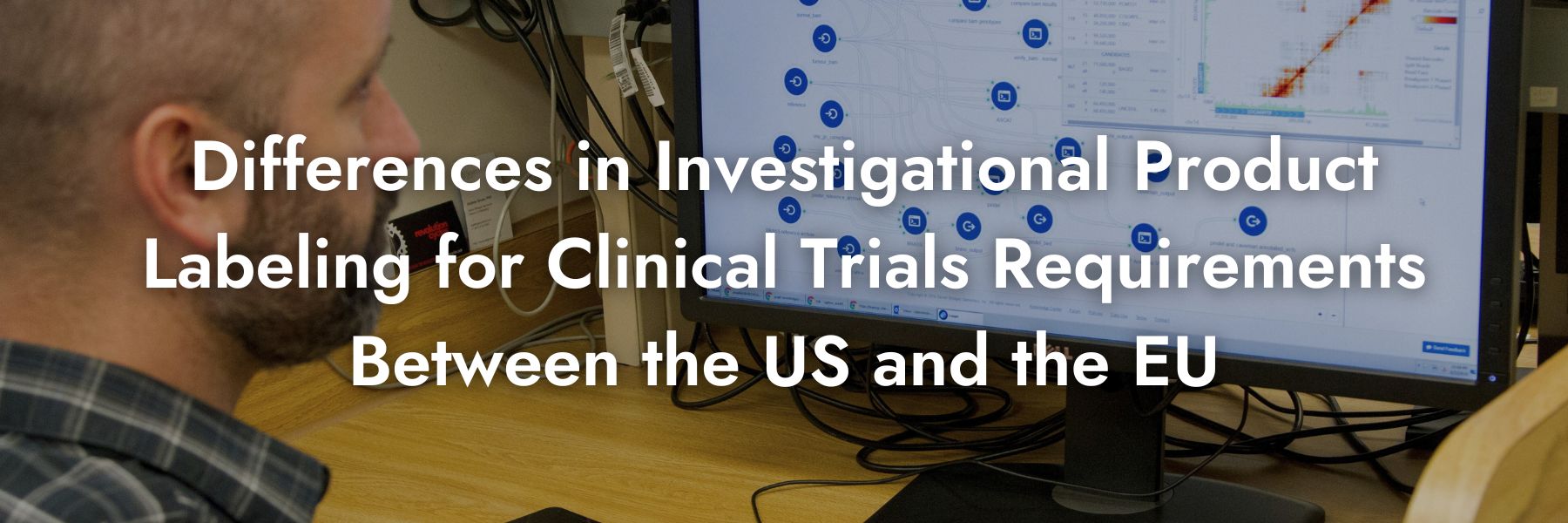Differences in Investigational Product Labeling for Clinical Trials Requirements Between the US and the EU
Investigational product (IP) labeling for clinical trials is a critical aspect of regulatory compliance and patient safety in both the United States (US) and the European Union (EU). While there are similarities in their respective requirements, several key differences exist that sponsors and clinical trial managers must understand and navigate effectively.
Regulatory Framework
In the US, investigational product labeling is governed primarily by the Food and Drug Administration (FDA) under Title 21 of the Code of Federal Regulations (CFR). Specifically, Part 312 (Investigational New Drug Application) outlines the requirements for labeling. The EU, on the other hand, is regulated by the European Medicines Agency (EMA) through Directive 2001/20/EC and Regulation (EU) No 536/2014, which provide comprehensive guidelines for clinical trial conduct, including labeling.
Key Differences in Labeling Requirements
- Language Requirements:
- US: The FDA mandates that all labeling must be in English. While additional languages can be included, English remains the primary required language.
- EU: Labeling must be translated into the local language(s) of the member states where the clinical trial is conducted. This multilingual requirement ensures that participants in different countries can understand the information provided.
- Content and Information:
- US: The FDA requires labels to include critical information such as the statement “Caution: New Drug—Limited by Federal (or United States) law to investigational use,” the investigational drug name or code, dosage form, route of administration, and storage conditions. Additionally, there must be an identifier to ensure traceability.
- EU: EMA regulations stipulate that labels must include the phrase “For clinical trial use only” (or equivalent), the trial reference code, the name and address of the sponsor, the batch number, expiration date, and the unique patient identification code. Furthermore, it must include the protocol number and the instructions for use.
- Expiration Date:
- US: The FDA does not require the expiration date to be on the label if the information is provided elsewhere (e.g., investigator brochure or protocol).
- EU: The EMA mandates that the expiration date be clearly stated on the label, reflecting the importance of ensuring that IPs are not used beyond their stability period.
- Additional Safety Information:
- US: Labels must include specific cautionary statements but are less prescriptive about additional safety information beyond what is stated in 21 CFR Part 312.
- EU: The EMA requires comprehensive safety information, including special storage and handling conditions, to be explicitly mentioned to enhance patient safety and compliance with Good Manufacturing Practice (GMP) standards.
Harmonization Efforts
Efforts are ongoing to harmonize clinical trial regulations globally, including labeling requirements. The International Council for Harmonisation of Technical Requirements for Pharmaceuticals for Human Use (ICH) plays a pivotal role in these endeavors. However, as of now, sponsors must comply with both FDA and EMA requirements when conducting multinational trials.
Conclusion
Understanding and adhering to the differing IP labeling requirements between the US and the EU is crucial for regulatory compliance and patient safety. By recognizing these differences and implementing appropriate measures, sponsors can ensure successful clinical trial execution and contribute to the development of safe and effective medical products.


Subscribe Now to the Bio-Startup Standard
Notify me for the next issue!



